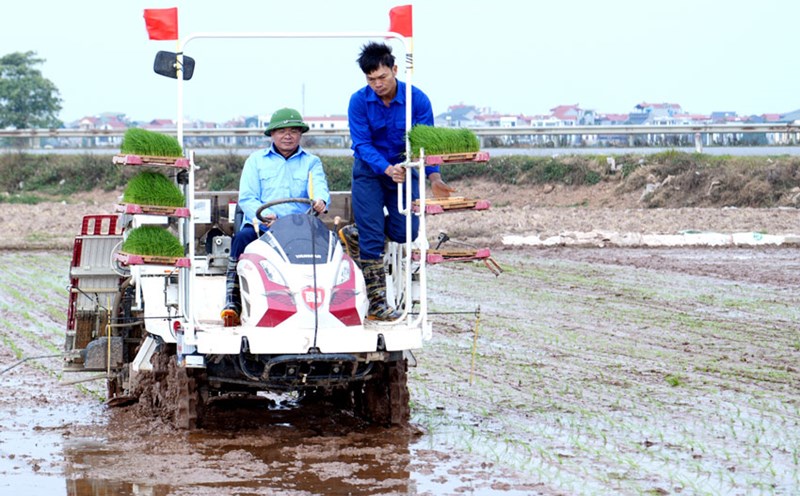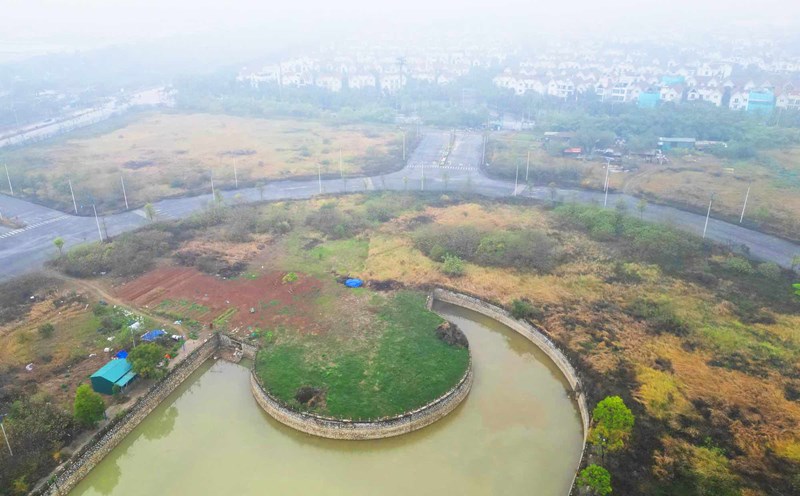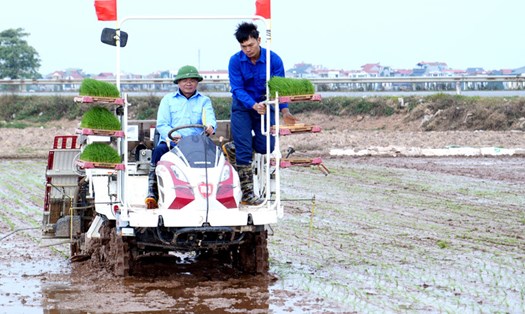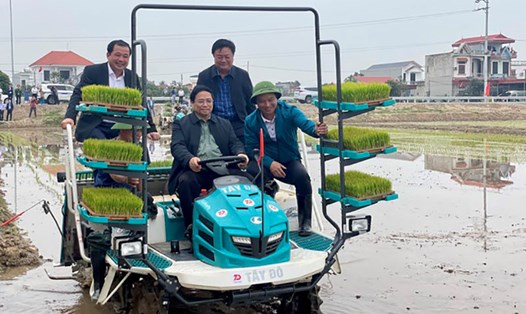The festival "King Hung teaches people to plant rice" in Minh Nong ward, Viet Tri city is a traditional festival held on January 15 every year. Since 2018, Viet Tri city has restored the festival, organized on a larger scale, with fuller parts after a period of comprehensive and systematic research on history and traditional customs (before that, since 1993, Minh Nong ward restored and organized part of the festival).
The festival "King Hung teaches people to plant rice" consists of 2 parts. In the ceremony part, along with traditional rituals such as Cao Nieu and worshiping the God of Agriculture, the ritual "King Hung teaches people to plant rice" is vividly and solemnly recreated. The festival part includes rice planting competitions and folk games with the participation of people and tourists from all over.
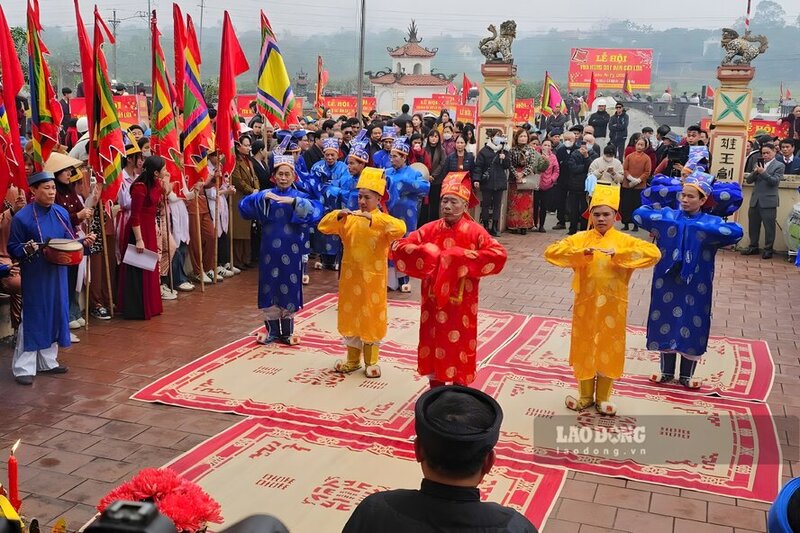
According to the Hung King legend, in ancient times, people did not know how to plow to produce rice, and mainly lived on fruits, wild vegetables, and wild animals. Seeing that the riverside lands were fertilized with alluvium every time the flood waters rose, King Hung called on the people to find a way to build banks to protect the water.
One day, King Hung's daughters followed the people to fish by the riverbank and saw flocks of birds flying around the beach. Suddenly, a bird dropped a rice flower on Mi Nuong's hair. She brought the rice flower back to tell King Hung. The King was happy and thought it was a good omen, so he told Mi Nuong and her daughters to go to the beach to pick the rice flowers and bring them back.
In the spring, King Hung and his people brought seeds to the fields. The King went down to the fields and used a sharp stick to poke holes to plant the rice seeds. When the seedlings grew, the people did not know how to plant them. King Hung pulled up the seedlings and brought them to the fields to plant for the people to see. After that, everyone followed suit.
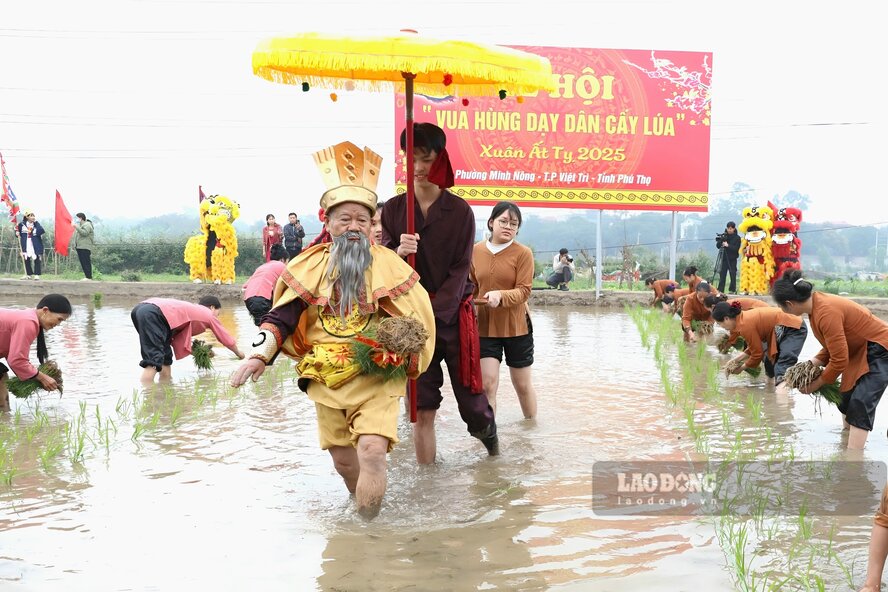
To remember King Hung's merits, later generations of people built the Tich Dien altar facing the southwest right on the promontory where King Hung sat when teaching people to plant rice, placed a food warehouse on Lua hill, stored straw on Straw hill, and named the market Cho Lu.
The festival "King Hung teaches people to grow rice" is an opportunity for people to remember and show gratitude for the great contributions of the Hung Kings who pioneered agriculture in the early days of nation building, promoting the nation's traditional morality of "When drinking water, remember its source", and at the same time, it is an opportunity to honor the spirit of diligence and creativity in labor of our people from the past to the present, which has created a unique cultural identity in the ancient capital of Van Lang.
The restored festival "King Hung teaches people to grow rice" has contributed to preserving and promoting the value of unique intangible cultural heritage in the homeland, contributing to helping Viet Tri achieve the goal of becoming a festival city returning to the roots of the Vietnamese people.

